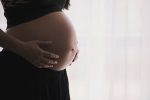Understanding Puberty and Teenage Pregnancy for JSS 2
Table of Contents
ToggleComprehensive Lesson Plan: Puberty, Premarital Sex, and Teenage Pregnancy
General Information
Subject: Physical and Health Education
Class: JSS 2
Term: Second Term
Week: 3
Age: 11–14 years
Topic: Puberty, Premarital Sex, and Teenage Pregnancy
Sub-topic: Meaning, Physical Changes, and Consequences
Key Components
Behavioral Objectives
By the end of the lesson, students should be able to:
- Define puberty, premarital sex, and teenage pregnancy.
- Identify physical changes that occur in boys and girls during puberty.
- List health consequences of premarital sex.
- Explain the consequences of teenage pregnancy.
Keywords: Puberty, physical changes, premarital sex, teenage pregnancy, consequences.
Set Induction
The teacher shows a short video or pictures illustrating physical changes during puberty in boys and girls. Students are asked to identify these changes.
Entry Behavior
Students are familiar with basic concepts about growth and development, as they have observed changes in their peers and themselves.
Learning Resources and Materials
- Diagrams of male and female body changes during puberty.
- Flashcards with keywords and their meanings.
- Lagos State Scheme of Work.
Building Background/Connection to Prior Knowledge
The teacher asks students to discuss any physical changes they have noticed in themselves or their peers as they grow.
Embedded Core Skills
- Critical thinking
- Communication
- Emotional intelligence
- Collaboration
Instructional Materials
- Charts showing physical changes during puberty.
- Flashcards with consequences of teenage pregnancy and premarital sex.
- Relevant textbooks and materials.
Content Details
1. Meaning of Puberty
- Puberty is the period when a child’s body starts to mature into an adult body capable of reproduction.
- For girls, puberty typically begins between ages 8–13.
- For boys, puberty usually starts between ages 10–14.
- This period includes physical, emotional, and psychological changes.
2. Physical Changes During Puberty
In Boys:
- Deeper voice.
- Muscle development and broader chest.
- Growth of facial, underarm, leg, and pubic hair.
- Enlargement of the penis and testicles.
- Erections and wet dreams.
In Girls:
- Growth of breasts.
- Wider and rounder hips.
- Growth of underarm and pubic hair.
- Onset of menstruation (periods).
3. Premarital Sex
- Meaning: Sexual intercourse between people who are not married.
- Consequences:
- Unwanted pregnancies.
- Sexually transmitted diseases (STDs).
- Emotional and psychological trauma.
4. Teenage Pregnancy
- Meaning: Pregnancy occurring in girls aged 13–19 or below legal adulthood.
- Consequences:
- Medical complications like premature labor.
- Low birth weight in babies.
- Dropping out of school and loss of ambitions.
- Emotional and financial struggles for the mother and child.
Evaluation Questions
Fill-in-the-Blank Questions
- ______ is the period when a child’s body starts to mature into an adult.
a) Adulthood
b) Childhood
c) Puberty
d) Adolescence - Physical changes in boys during puberty include ______.
a) Menstruation
b) Deeper voice
c) Breast growth
d) Wider hips - Premarital sex refers to sexual activity between ______.
a) Married couples
b) Teenagers
c) Unmarried individuals
d) Family members - Teenage pregnancy is defined as a pregnancy occurring in girls aged ______.
a) 8–12
b) 13–19
c) 20–25
d) Above 30 - One consequence of teenage pregnancy is ______.
a) Premature labor
b) Physical fitness
c) Higher education
d) Career opportunities
(Continue to 15 questions…)
Class Activity Discussion
15 FAQs with Answers
- What is puberty?
Puberty is the period when a child’s body changes into an adult body capable of reproduction. - What is premarital sex?
Premarital sex is sexual activity between people who are not married. - What are the physical changes in boys during puberty?
Boys develop deeper voices, broader chests, and grow facial and body hair. - What are the consequences of premarital sex?
Consequences include unwanted pregnancies, STDs, and emotional trauma. - What is teenage pregnancy?
Teenage pregnancy is when a girl aged 13–19 becomes pregnant. - At what age does puberty typically start for boys?
Puberty usually starts between ages 10–14 for boys. - What is the first sign of puberty in girls?
Breast development is usually the first sign. - Name one medical complication of teenage pregnancy.
Premature labor is a common complication.
Lesson Presentation Steps
Step 1: Revision of the Previous Topic
- The teacher reviews the previous lesson on “Family Life Education” by asking students to define a family and list its types.
Step 2: Introduction of New Topic
- The teacher introduces “Puberty, Premarital Sex, and Teenage Pregnancy” and explains its importance.
Step 3: Student Contributions
- The teacher asks students to describe physical changes they have noticed and provides corrections as necessary.
Teacher’s Activities
- Display charts showing physical changes during puberty.
- Explain the consequences of premarital sex and teenage pregnancy.
- Ask students to discuss how to avoid teenage pregnancy.
Learners’ Activities
- Observe the charts and diagrams.
- Discuss their own experiences with changes during puberty.
- Participate in group discussions on how to make good choices.
Assessment
10 Short-Answer Questions
- Define puberty.
- List three physical changes in boys during puberty.
- What is premarital sex?
- Mention two health consequences of premarital sex.
- Explain teenage pregnancy.
(Continue to 10 questions…)
Conclusion
The teacher moves around to check students’ notes and provide feedback. The lesson ends with a summary of key points and advice on healthy choices during adolescence.


Related posts:
- Introduction to Karate Meaning, History, Basic Skills, Rules, Officials, Terminologies, Benefits Physical and Health Education JSS 2 Second Term Lesson Notes Week 3
- Physical and Health Education JSS 2 Second Term Lesson Notes
- Floor Activities in Gymnastics
- Importance of Family Life Education in JSS 2
- Assertiveness and Communication Skills & Sport Promotion Agencies in Nigeria